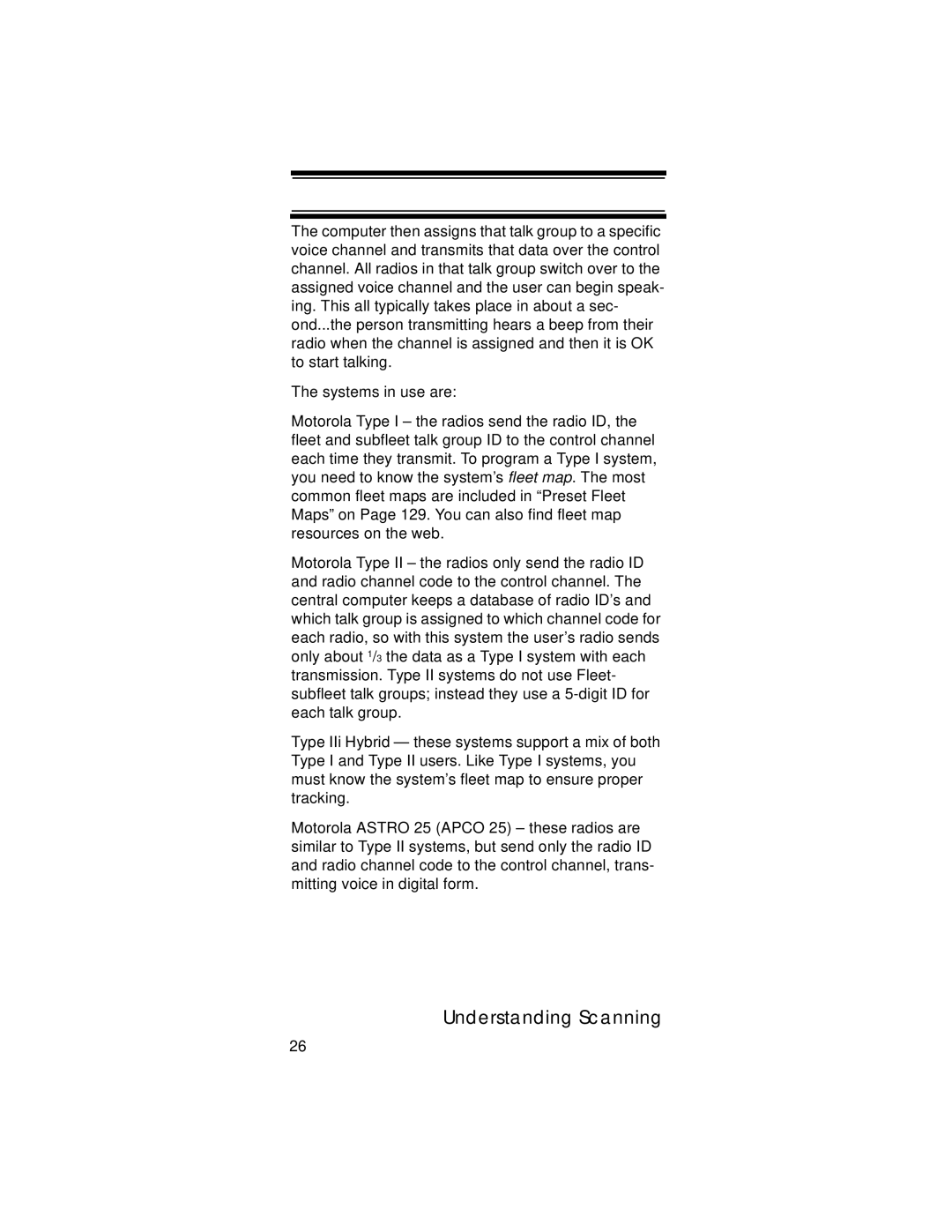The computer then assigns that talk group to a specific voice channel and transmits that data over the control channel. All radios in that talk group switch over to the assigned voice channel and the user can begin speak- ing. This all typically takes place in about a sec- ond...the person transmitting hears a beep from their radio when the channel is assigned and then it is OK to start talking.
The systems in use are:
Motorola Type I – the radios send the radio ID, the fleet and subfleet talk group ID to the control channel each time they transmit. To program a Type I system, you need to know the system’s fleet map. The most common fleet maps are included in “Preset Fleet Maps” on Page 129. You can also find fleet map resources on the web.
Motorola Type II – the radios only send the radio ID and radio channel code to the control channel. The central computer keeps a database of radio ID’s and which talk group is assigned to which channel code for each radio, so with this system the user’s radio sends only about 1/3 the data as a Type I system with each transmission. Type II systems do not use Fleet- subfleet talk groups; instead they use a
Type IIi Hybrid — these systems support a mix of both Type I and Type II users. Like Type I systems, you must know the system’s fleet map to ensure proper tracking.
Motorola ASTRO 25 (APCO 25) – these radios are similar to Type II systems, but send only the radio ID and radio channel code to the control channel, trans- mitting voice in digital form.
Understanding Scanning
26
